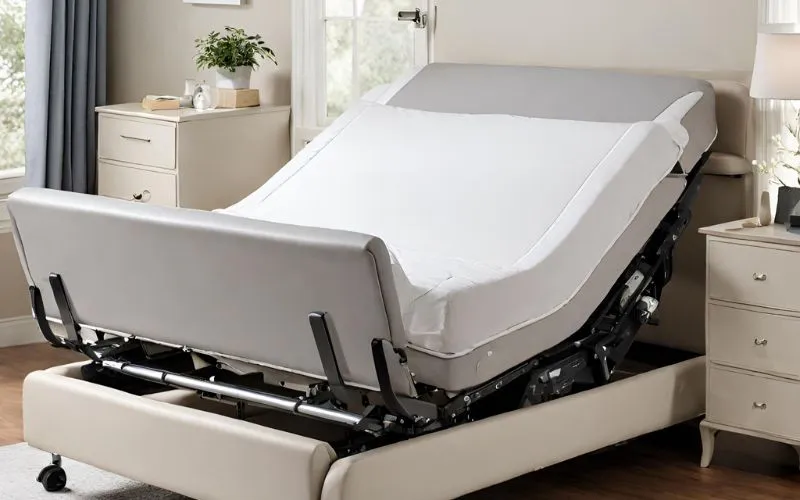Simple Solutions for Troubleshooting Adjustable Bed Issues

Introduction
Adjustable beds are known for their versatility and comfort, providing users with personalized support for a good night’s sleep. However, like any piece of furniture, adjustable beds may encounter issues that can disrupt their functionality. In this comprehensive guide, we’ll explore the common issues faced by users, diagnosis techniques, troubleshooting solutions, preventive maintenance tips, and the importance of seeking professional help when needed.
Understanding Adjustable Beds
What Are Adjustable Beds?
Adjustable beds, also known as power beds or electric beds, are innovative sleep solutions designed to provide personalized comfort and support. These beds feature multiple hinges and motorized segments that allow the bed to be adjusted to varying positions, catering to the unique needs of individuals. Here’s a more in-depth look at the features and benefits of adjustable beds:
- Adjustment Capabilities: Adjustable beds offer a range of motion, enabling users to elevate the upper or lower body, adjust the head and foot positions, and find the most supportive posture for sleeping, reading, or watching TV.
- Customizable Settings: Some adjustable beds come with programmable memory settings, allowing users to save their preferred positions for quick and convenient adjustments.
- Massage Functions: Many modern adjustable beds are equipped with massage features that provide soothing relief to tired muscles and promote relaxation.
- Remote Control Operation: The majority of adjustable beds can be easily controlled via a handheld remote, making it simple to change positions without any physical effort.
These advanced sleep systems are gaining popularity due to their ability to enhance comfort, alleviate common sleep-related issues, and provide a more tailored sleep experience.
Benefits of Adjustable Beds
Adjustable beds offer a wide range of benefits, promoting better sleep quality, improved comfort, and enhanced wellness for individuals with various medical conditions. The adaptability of adjustable beds allows users to customize their sleeping position, offering relief from common issues such as snoring, acid reflux, lower back pain, and poor circulation. By adjusting the bed to their preferred angles, users can experience significant improvements in overall sleep experience and physical well-being.
Common Adjustable Bed Issues
Adjustable beds, like any other piece of furniture, may encounter various issues over time. Understanding these common issues is essential for troubleshooting and ensuring the smooth functionality of the bed. Let’s delve into some of the most prevalent issues that adjustable bed users may face:
- Unresponsive Remote Controls:One of the common issues with adjustable beds is unresponsive remote controls. This can be frustrating for users who rely on the remote to adjust the bed’s positioning. The remote control may fail to communicate with the bed base, leading to inconvenience and potential discomfort.
- Malfunctioning Motors: Another prevalent issue involves malfunctioning motors. These motors are responsible for powering the adjustments in the bed’s positioning. When the motors malfunction, it can hinder the bed’s ability to adjust, causing inconvenience for the users.
- Uneven or Unstable Bed Adjustments: Some users may encounter issues with uneven or unstable bed adjustments. This can manifest as one side of the bed adjusting differently or being less stable than the other, leading to discomfort and dissatisfaction with the bed’s functionality.
Common Issues and Troubleshooting
Issue: Unresponsive Remote Control
Adjustable beds are equipped with remote controls to facilitate easy adjustments and provide convenience to users. However, one common issue that users may encounter is an unresponsive remote control. This can be frustrating and may disrupt the overall functionality of the adjustable bed. Understanding the potential causes and troubleshooting steps can help resolve this issue effectively.
- Low Battery Levels: One of the primary reasons for an unresponsive remote control is low battery levels. Over time, the batteries in the remote control may lose their charge, leading to a lack of responsiveness.
- Obstructions between Remote and Control Box: If there are physical obstructions or interference between the remote control and the control box of the adjustable bed, it can result in an unresponsive remote.
- Issues with the Control Box: Internal malfunctions or connectivity issues within the control box can also cause the remote control to become unresponsive.
When faced with an unresponsive remote control, users can take the following troubleshooting steps to identify and resolve the issue:
- Replace the Batteries: Start by replacing the batteries in the remote control with fresh ones. This can often address the issue if low battery levels were the cause.
- Ensure Clear Line of Sight: Check for any obstacles or physical obstructions between the remote control and the control box. Clearing the line of sight can help improve responsiveness.
- Inspect the Control Box: Examine the control box for any signs of physical damage or loose connections. Ensure that it is securely plugged in and functioning properly.
If despite these troubleshooting steps the issue persists, it is advisable to seek assistance from the customer support of the adjustable bed manufacturer. They can provide further guidance and potentially arrange for repairs if necessary.
Issue: Malfunctioning Motor
Issue: Malfunctioning Motor
Malfunctioning motors can disrupt the smooth operation of adjustable beds. This issue may arise due to power interruptions, damaged power cables, or motor defects. Troubleshooting involves testing the current flow, inspecting the power cables for any signs of damage, and resetting the motor as per the manufacturer’s instructions. If the problem persists, seeking professional assistance from authorized technicians is essential.
Issue: Uneven or Unstable Bed Adjustment
Uneven or unstable bed adjustment can lead to discomfort and disruption while using an adjustable bed. This issue can be attributed to problems in the bed frame, mechanical components, or control systems. Troubleshooting steps include inspecting the bed frame for physical damage, checking the mechanical components for proper alignment, and recalibrating the control systems. Seeking professional support for diagnosing and rectifying the issue is recommended if troubleshooting steps do not yield the desired results.
Maintenance and Care Tips
Regular Cleaning and Inspection
Regular Cleaning and Inspection
Regular cleaning and inspection are essential for maintaining the functionality and durability of adjustable beds. This involves removing dust and debris, inspecting electrical connections, and ensuring that all moving parts are free from obstruction. Additionally, checking for loose screws and tightening them as necessary can prevent future issues.
Lubrication of Moving Parts
Lubrication of Moving Parts
Lubricating the moving parts of adjustable beds is imperative for smooth operation and preventing wear and tear. Applying suitable lubricants to the hinges, motors, and mechanical components can minimize friction and maintain the bed’s functionality. It’s important to follow the manufacturer’s guidelines for lubrication schedules and recommended products for optimal care.
Protecting Electrical Components
Protecting the electrical components of adjustable beds from power surges and voltage fluctuations is paramount. Using surge protectors and voltage regulators can safeguard the bed’s control systems and prevent electrical damage. Additionally, regular inspection of power cables and connections can identify potential issues and ensure uninterrupted functionality.
- Surge protectors are essential electrical devices that protect adjustable bed components from sudden power surges.
- They work by diverting excess voltage away from the connected equipment, preventing damage to electronic circuits and control systems.
- Voltage regulators play a vital role in ensuring that the electrical components of adjustable beds receive stable and regulated voltage.
- They help to maintain a consistent voltage level, which is crucial for the proper functioning of control systems and electronic components.
Conducting routine inspections of power cables, connections, and electrical components is important to identify signs of wear, corrosion, or damage. This proactive approach can prevent potential electrical issues and ensure the uninterrupted operation of the bed.
Conclusion
In conclusion, troubleshooting adjustable bed issues is essential for maintaining their optimal functionality and ensuring user comfort. By understanding common issues, implementing effective troubleshooting solutions, and following preventive maintenance tips, users can enhance the longevity of their adjustable beds and enjoy uninterrupted comfort and support.




